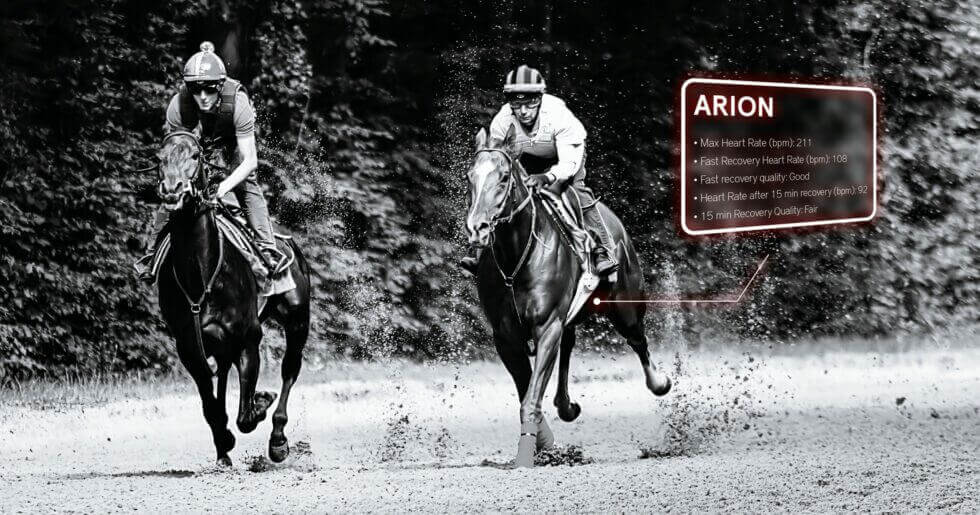Warning: number_format() expects parameter 1 to be float, string given in /var/www/wordpress/wp-includes/functions.php on line 425
A racehorse’s team faces a considerable difficulty: the horse does not speak. The horse’s team encounters a major issue in the training of racehorses: how to find the balance between overtraining and under-training? Trainers, jockeys and veterinarians must therefore rely on their instincts and feelings in order to adapt training to each horse and ensure the well-being of the animal. The use of data plays an essential role in the search for the training balance point for racehorses. Indeed, the data collected allows the horse to speak through the use of tangible information: it is then possible to quantify the horse’s level of fitness and recovery and to ensure that the training corresponds to his fitness.
Overtraining syndrome in horses
As in humans, overtraining syndrome is known as a state of chronic fatigue marked by a pronounced decrease in performance. It is the negative consequence of an unbalanced relationship between the fatigue induced by training exercises and the body’s ability to recover. The recovery phases are essential for the proper functioning of the horse’s organism. In fact, training causes changes in the balance of the different systems of the organism. Introducing recovery phases which allow the rebalancing of these systems is necessary to ensure that the health of the athletic horse is preserved.
The origin of the syndrome is complex and composed of several metabolic, endocrine and nervous factors. In addition, the progressive appearance of symptoms makes it difficult to diagnose. Late treatment coupled with a reduction in training load does not allow the concerned horse to recover properly to regain its initial capacities. The treatment of this syndrome requires a total convalescence period of several weeks: this can greatly compromise a racehorse’s career.
What are the symptoms of overtraining in racehorses?
Without a full clinical examination, it is still possible to identify an overtrained horse by monitoring three measurable parameters: performance (notably through the data collected), weight and behavior of the horse.
Decreased performance is the first symptom that is easily spotted. The horse is no longer able to hold its effort as long as before. The second symptom is weight loss without any real loss of appetite. This is early and usually occurs three weeks before the drop of performance. However, this symptom is less easily detected. Finally, the last symptom concerns the modification of the behaviour of over-trained horses. Although difficult to quantify and qualify, it is possible to notice a strong irritability, reluctance to work or even bites on the harness. These modifications are very diverse and remain specific to each horse.
In short-term, overtraining can be corrected quickly by temporarily stopping the training, this is known as short-term overtraining. However, if the overtraining syndrome has persisted for a long time, the temporary cessation of training will not correct it because the overtraining syndrome will have triggered metabolic, endocrine and behavioral changes.

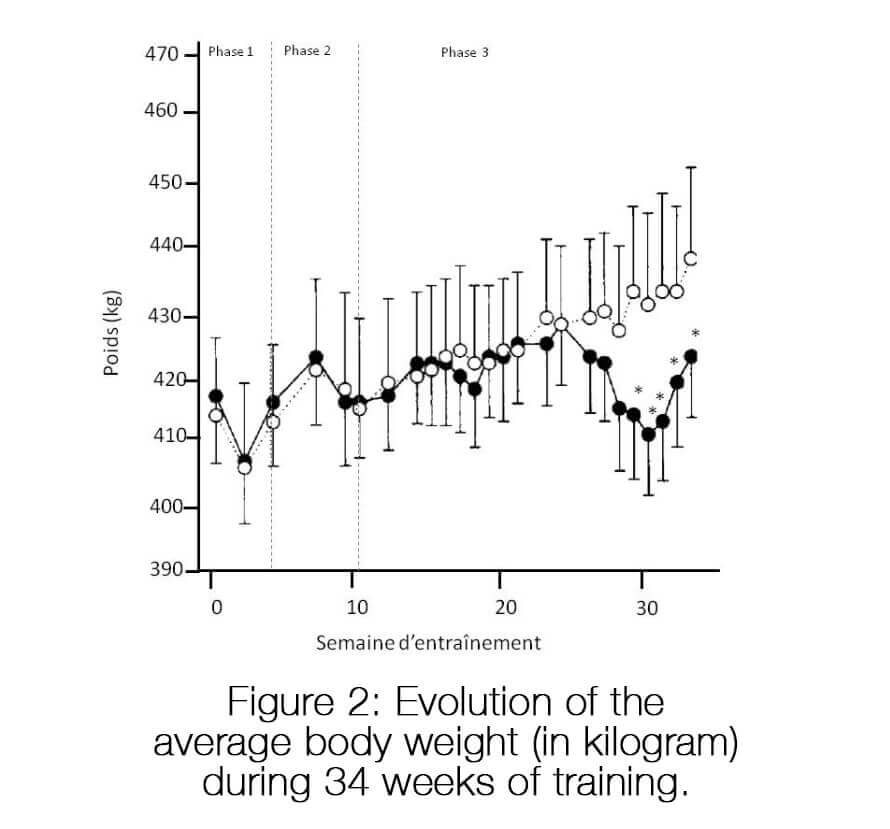
About under-training in racehorses
Undertraining can be defined as a lack of training of the athletic horse. The athletic horse has never been trained with a workload similar to what is required during a race or competition and his body would then be unable to keep up with the effort. This condition can be dangerous for the horse’s health as lack of preparation could lead to an accident.
Training allows the improvement of a horse’s physical, physiological, technical and mental qualities. It is the key success in performance renewal. As a trained horse, he will better support the workload of the race and recover better than an untrained horse. In this way, it helps to preserve the health of the athletic horse.
How to detect an under-trained horse?
To detect an under-trained horse, the analysis of physiological parameters coupled with the analysis of sports parameters provides a good key to analysis. Indeed, a horse for which exercise has been easy will not reach its maximum heart rate (HR) and its HR curve will drop immediately after the rider stops exercising. In addition, the evolution and frequency of his speed work can also be analysed: thanks to the longitudinal follow-up of the horse, the times demonstrated in training can be compared from one training session to the next, bearing in mind race time benchmarks.
It is interesting to push the horses in a punctual way in order to study their real physical aptitudes: it is the speeds reached which allow these aptitudes to be objectified.
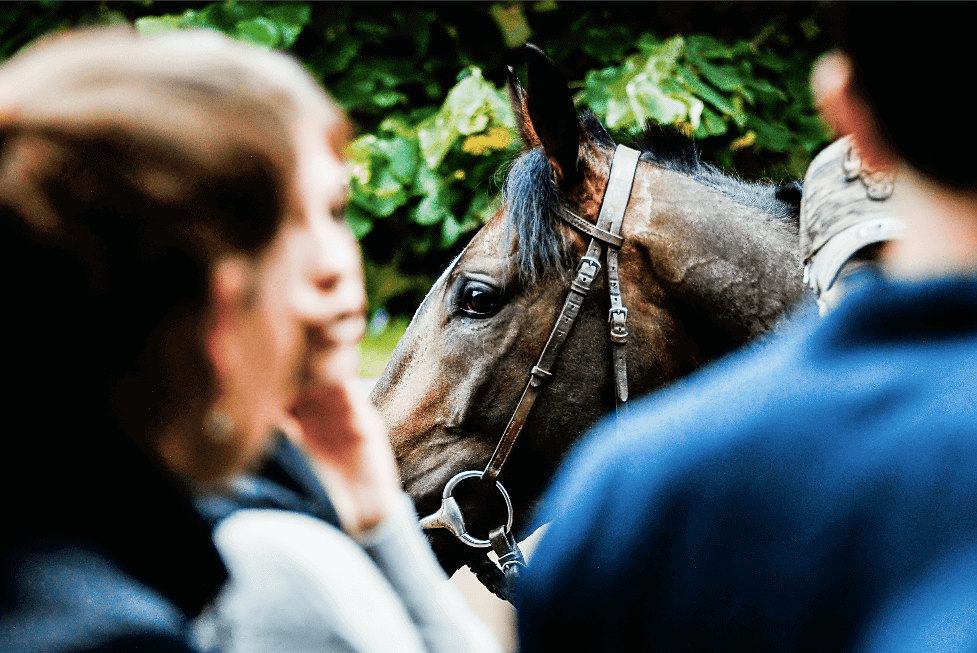
Adapting an untrained racehorse’s training – Concrete example
In the following example, Arion is a Group horse that arrived in October 2020 at his new trainer’s stable. As an Equimetre user, he was able to track Arion’s training from the minute he arrived in order to begin developing his database.
After winning many races, Arion’s trainer discovered that his blood results were low after a race. As a result, training was put on hold for a while.
Arion continued training after his recovery, but he never achieved the fitness he had before to his racing success.
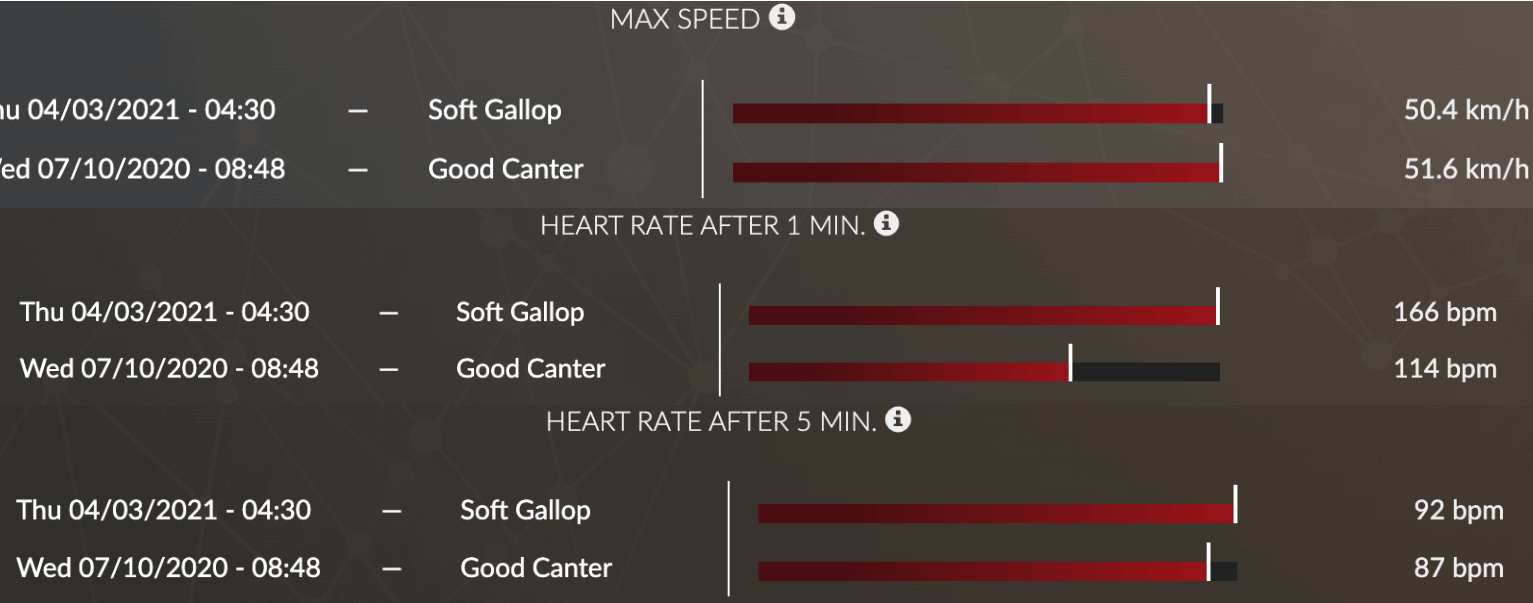
Indeed, based on the statistics shown above, Arion’s recovery ability has worsened slightly for a same degree of training: his heart rate after exercise is 166 BPM, up from 114 BPM when he came in October. This is also true for his recuperation 5 minutes after the effort ends. The trainer was able to question the many possibilities explaining this fitness loss as a result of this observation. By interviewing Arion’s prior trainer, he was able to confirm that his training intensity had decreased as a result of using different training approaches.

Before
After
Arion was able to restore his pre-race fitness and even win additional groups after readjusting his training.
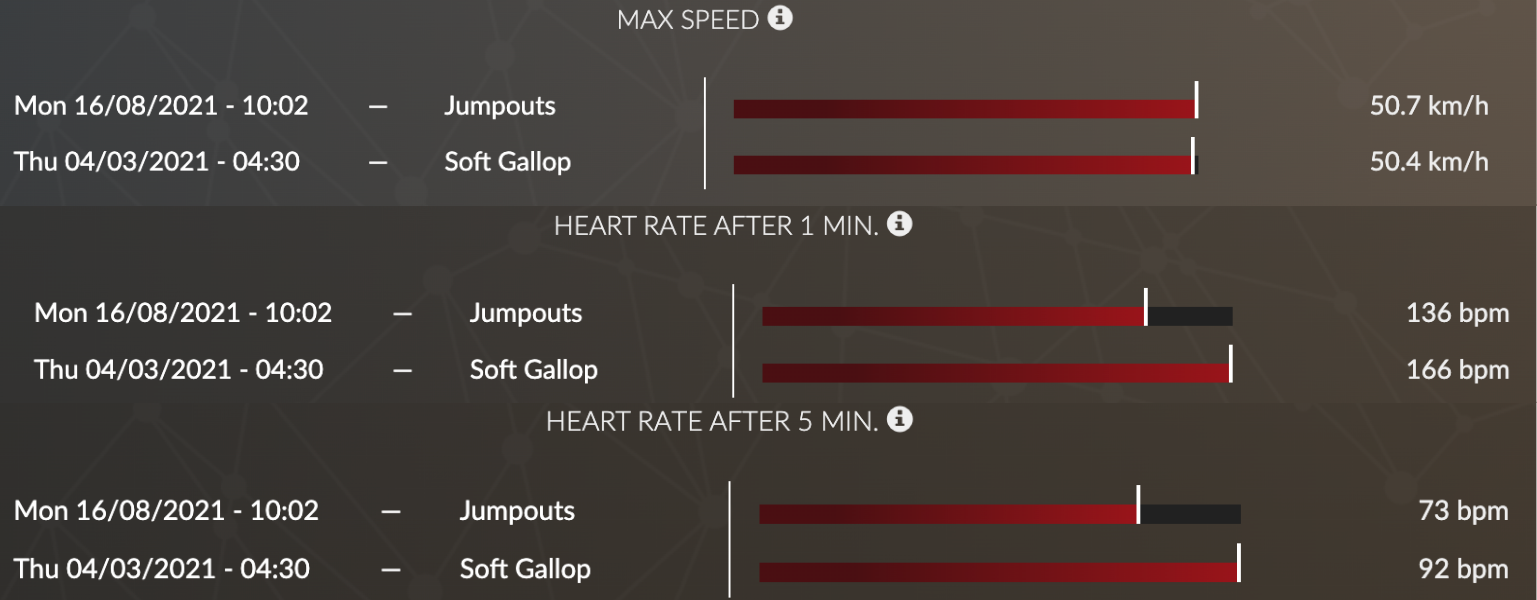
Undertraining is generally the result of the difficulty in individualising the workload of each horse. With limited resources and manpower, it is often not easy for trainers to spend time on adapting the workload of each horse. By objectivising sport and recovery data, training data can help to form homogenous training groups of horses with similar training needs.
The role of exercise testing
The intensity of a training session is evaluated by the jockey or trainer, without any real measuring instrument enabling the effect of a training session on the horse to be qualified on the basis of tangible data.
An exercise test is a means of characterising the working capacity of a horse through the objectification of its response to training. At the end of the test, the trainer and the rider are able to adapt the training programme according to the results obtained in the test. The exercise test is a tool for measuring long-term follow-up because it allows to know the horses’ level of fitness at a given moment, but also to evaluate him as the training progresses.
To find the balance between overtraining and undertraining, the effort test proves to be a great asset as it helps to determine how much work the horse can support.
Finding the point of balance thanks to data
“Attention to animal welfare has grown enormously in recent years: we need to make sure that horses are not put in the red by a proven methodology rather than a subjective ‘feeling’. “
Emmanuelle Van Erck, veterinarian.
In order to carry out a long-term follow-up and prevent overtraining or the risk of accidents, two key data must be monitored daily thanks to the connected sensors. The heart rate and the horse’s recovery are elements that allow it to detect if the horse is holding its effort normally or if, on the contrary, its parameters are different from what he is used to.
Checking recovery indicators to ensure that they do not deteriorate from one training session to the next is an action to be implemented in order to monitor the horse’s fitness level and prevent over and under training. If recovery is poor, unusually high heart rate levels (compared to the previous one) will be visible. It would then be appropriate to involve the vet so that he can analyse his electrocardiogram.
The use of the EQUIMETRE sensor allows trainers to ask their veterinarian to analyse the ECG of a horse with unusual physiological parameters, all remotely. In fact, the ECG is systematically recorded at each training session, and thanks to the EQUIMETRE mirror accounts, the veterinarian has remote access to it and can thus investigate a possible problem.
It is the analysis of the recovery which can help the trainer to judge the assimilation of the day’s work in order to adapt the next session. To analyse the recovery, 4 zones in the review of the evolution of the heart rate during work can be useful: you will find them in this article.
The point of balance is specific to each horse, which is why it is necessary to individualise the work so that each horse can reach an optimal level of fitness to maximise the chances of winning a race while minimising the risk of injury.
Keywords: overtraining, under-training, horse racing, individualization of training, physiological parameters
Sources
Le Gal, S. and PRIYMENKO, N., 2014. Surentraînement du cheval : quel pourrait être l’intérêt du suivi de la leptinémie ?. Revue Méd. Vét, (165), pp.231-239.
GALLOUX, P. and BESSAT, G., 2018. L’entraînement du couple cheval de sport/cavalier. IFCE.
GALLOUX, P., 2017. Evaluer La Charge D’entrainement. [online] Equipedia.ifce.fr

